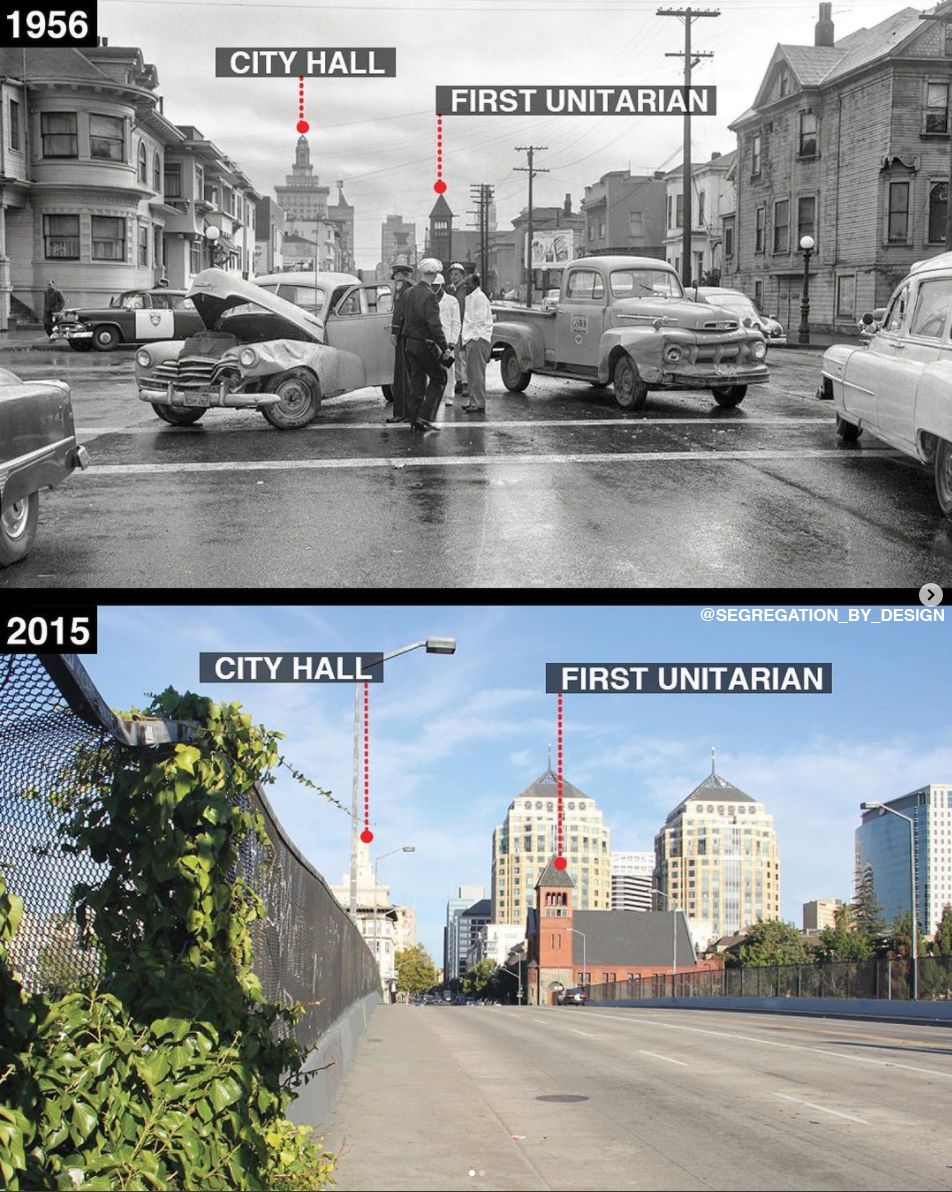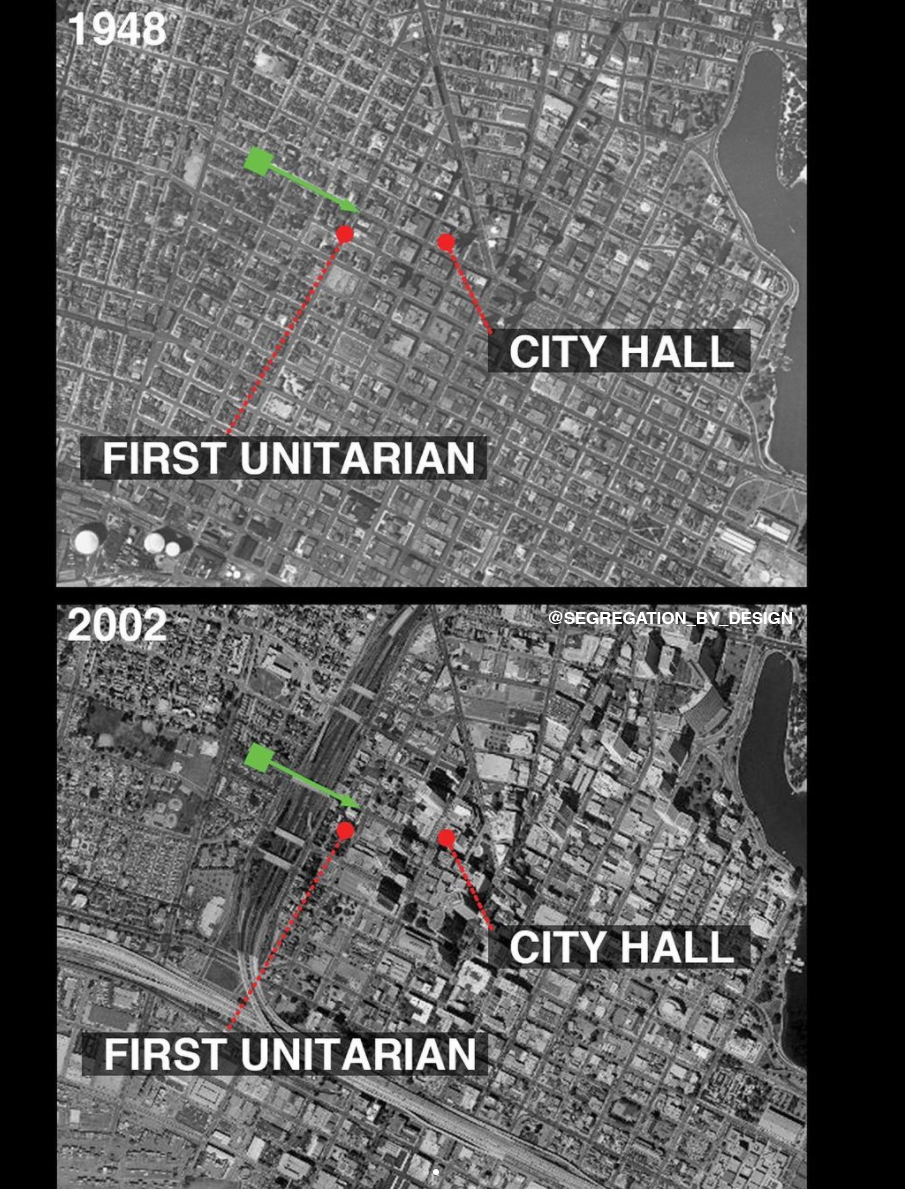OAKLAND: FREEWAYS & URBAN RENEWAL
West Oakland was entirely encircled with freeways, physically dividing the primarily African-American neighborhood and its residents from the rest of the city. On the eastern edge of the neighborhood, I-980 created a literal wall between West Oakland and Downtown. The MacArthur Freeway (I-580) divided West Oakland from northern neighborhoods, and the Cypress Freeway (I-880) cut through the middle of West Oakland itself.
Construction of the Cypress Freeway alone resulted in the destruction of 5,000 homes. The Cypress Freeway, a double-decked viaduct structure, collapsed in the 1989 Loma Prieta Earthquake, killing 63 people. I-880 was subsequently rerouted along the western and southern borders of West Oakland, fully encircling the neighborhood. To this day West Oakland remains encircled in a wall of concrete and exhaust. The areas immediately adjacent to the freeways have among the highest rates of asthma per capita in the state of California.
From the @congressforthenewurbanism: "The highway inhibits West Oakland residents from easily accessing downtown on foot and by bike, with a daunting route that consists not only of the Interstate, but also a pair of frontage roads that serve fast-moving traffic. Furthermore, the highway is largely underutilized, carrying only 53 percent of its potential capacity, mostly local traffic with both origins and destinations along the northern part of the corridor."
Roughly the same view of 14th street looking toward downtown from west of Brush St., from 1956 and 2015 (source: @connectoakland). I-980 destroyed the many businesses and homes in the eastern part of the neighborhood, creating an exhaust-spewing trench between West Oakland and Downtown. The green square 🟩 on the aerial photos shows roughly from where the photos were taken.
Regarding why the "before" photo is of a car wreck, cameras weren’t as ubiquitous in the past as they are today. Because photography was complicated and expensive, a lot of historical photography exists for official reasons. In this case, it was perhaps a journalist documenting a wreck, or maybe an insurance company gathering evidence. Unfortunately “slice of life” photos are difficult to come by.





